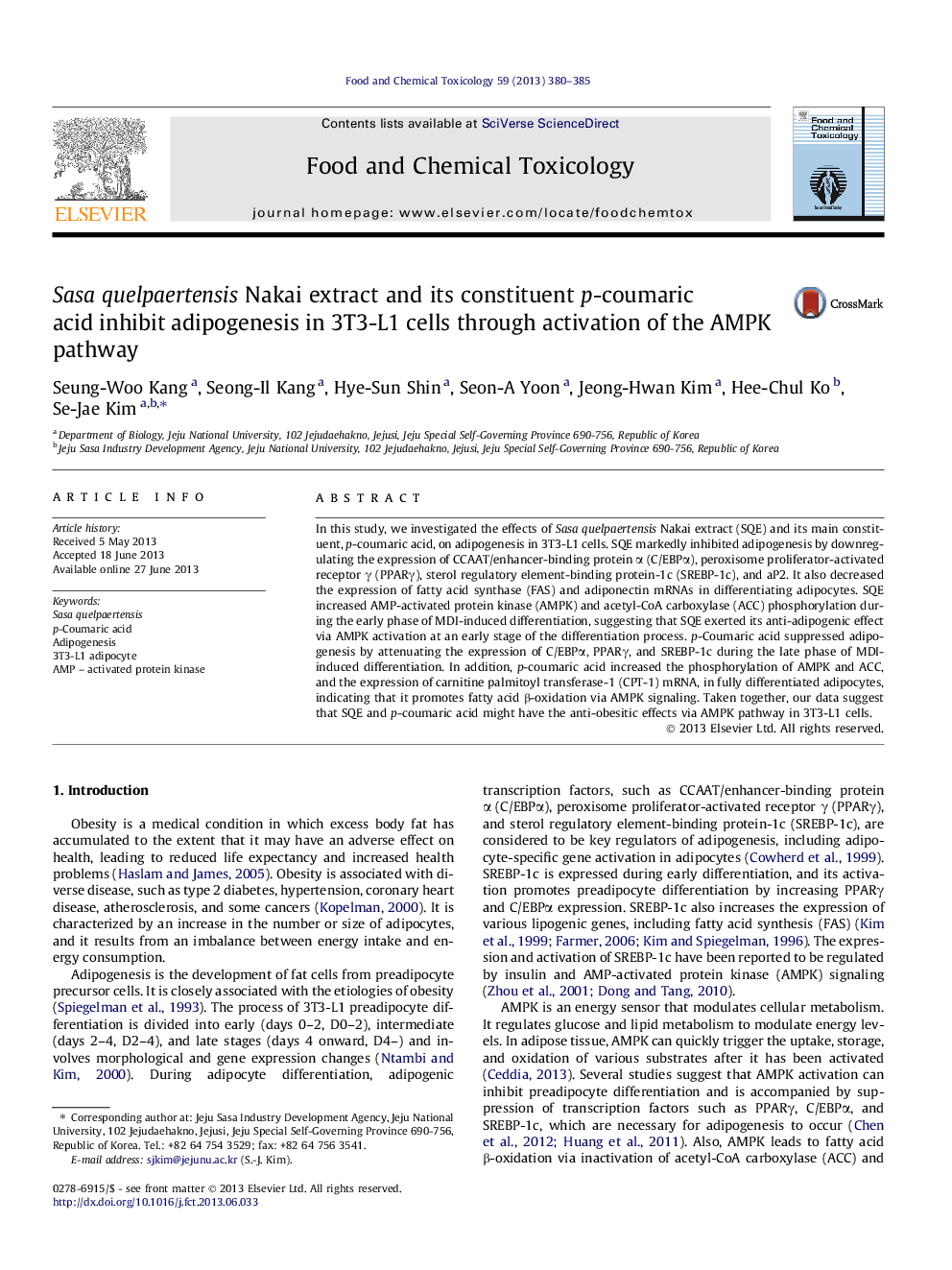| Article ID | Journal | Published Year | Pages | File Type |
|---|---|---|---|---|
| 5851059 | Food and Chemical Toxicology | 2013 | 6 Pages |
Abstract
In this study, we investigated the effects of Sasa quelpaertensis Nakai extract (SQE) and its main constituent, p-coumaric acid, on adipogenesis in 3T3-L1 cells. SQE markedly inhibited adipogenesis by downregulating the expression of CCAAT/enhancer-binding protein α (C/EBPα), peroxisome proliferator-activated receptor γ (PPARγ), sterol regulatory element-binding protein-1c (SREBP-1c), and aP2. It also decreased the expression of fatty acid synthase (FAS) and adiponectin mRNAs in differentiating adipocytes. SQE increased AMP-activated protein kinase (AMPK) and acetyl-CoA carboxylase (ACC) phosphorylation during the early phase of MDI-induced differentiation, suggesting that SQE exerted its anti-adipogenic effect via AMPK activation at an early stage of the differentiation process. p-Coumaric acid suppressed adipogenesis by attenuating the expression of C/EBPα, PPARγ, and SREBP-1c during the late phase of MDI-induced differentiation. In addition, p-coumaric acid increased the phosphorylation of AMPK and ACC, and the expression of carnitine palmitoyl transferase-1 (CPT-1) mRNA, in fully differentiated adipocytes, indicating that it promotes fatty acid β-oxidation via AMPK signaling. Taken together, our data suggest that SQE and p-coumaric acid might have the anti-obesitic effects via AMPK pathway in 3T3-L1 cells.
Related Topics
Life Sciences
Agricultural and Biological Sciences
Food Science
Authors
Seung-Woo Kang, Seong-Il Kang, Hye-Sun Shin, Seon-A Yoon, Jeong-Hwan Kim, Hee-Chul Ko, Se-Jae Kim,
